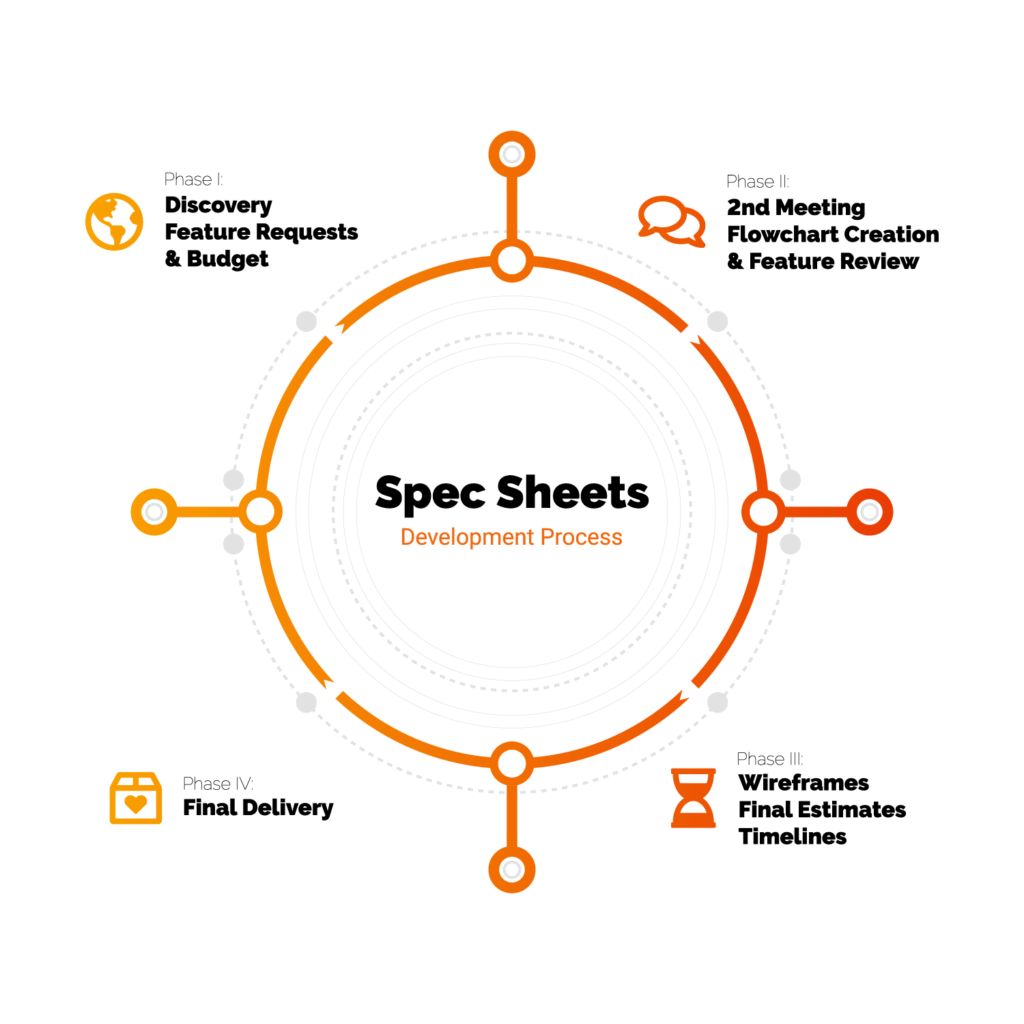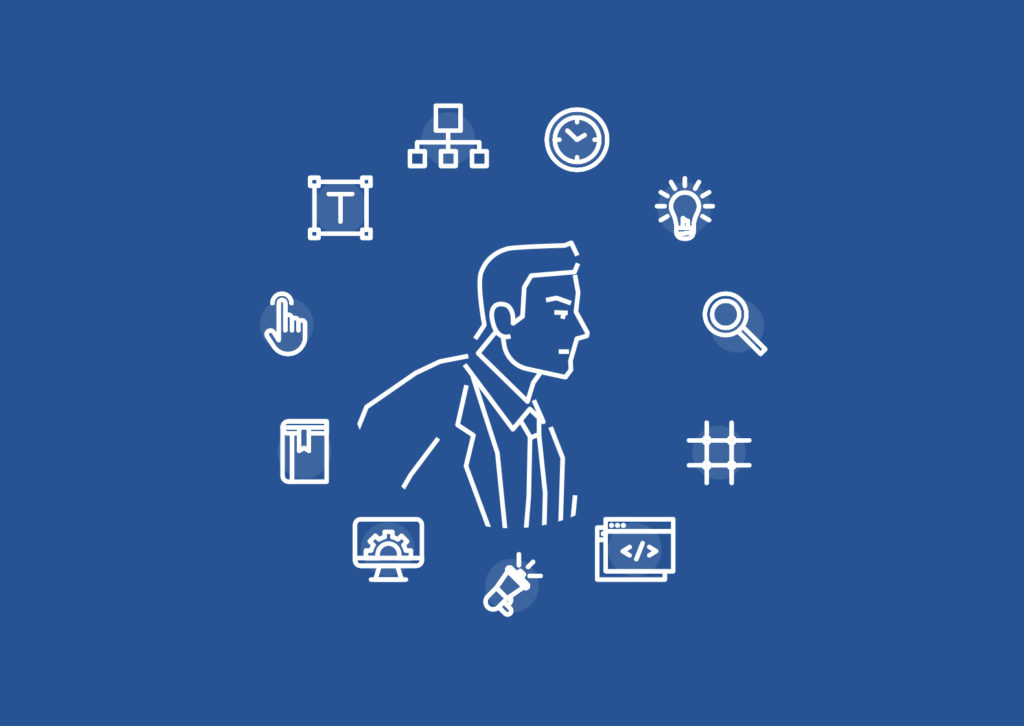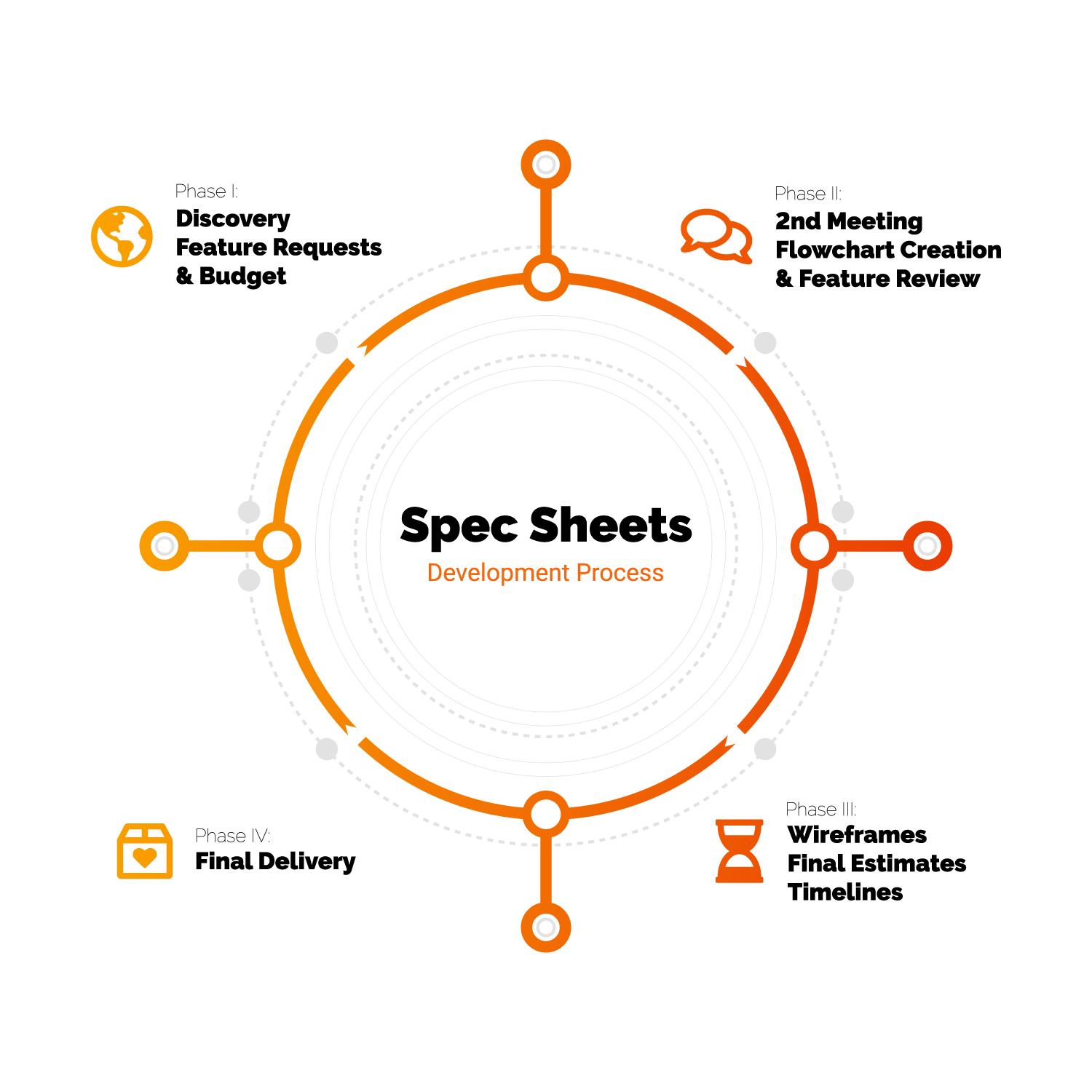
A lot of planning goes into turning your mobile app into reality. The first step of Fyresite’s app-building process is the Spec Sheet ‒ a detailed project blueprint that includes process flows, database architecture, and realistic time/cost estimates. Our Spec Sheet process ensures that every project is collaborative and transparent every step of the way ‒ from our initial discovery meeting to final delivery of the finished product. Read on below for a summary of what happens in each phase of the Spec Sheet process.
Building a spec sheet is an important part of the overall app-building process. To find out what happens after we make your spec sheet, read about the design and prototyping process.
 Phase I: Discovery, Feature Requests & Budget
Phase I: Discovery, Feature Requests & Budget
The core focus of the first application development meeting is ideation. This is an opportunity for us to understand your development goals, target audience, and company culture to help us craft the perfect solution for your Company. The Phase I meeting is also an opportunity for us to discuss the full range of desired functionality, features, and overall user experience (UX). Following this collaborative discussion, our project managers and senior developers work closely with you to build upon your ideas and vision to explore innovative features that support your business logic and development needs while being conscious of time and budgetary constraints. Our Phase I Spec Meeting is all about getting aligned regarding your core ideas, project scope, timeline, and budget.
 Phase II: Flowchart Creation & Feature Review
Phase II: Flowchart Creation & Feature Review
After the first meeting, our developers and designers will thoroughly analyze each feature on your list. This analysis enables us to map out the skeleton of your application in several neat process flowcharts. These flowcharts break complicated processes into smaller steps to make them easier to understand. Here’s an example of a flowchart for ZINKN.
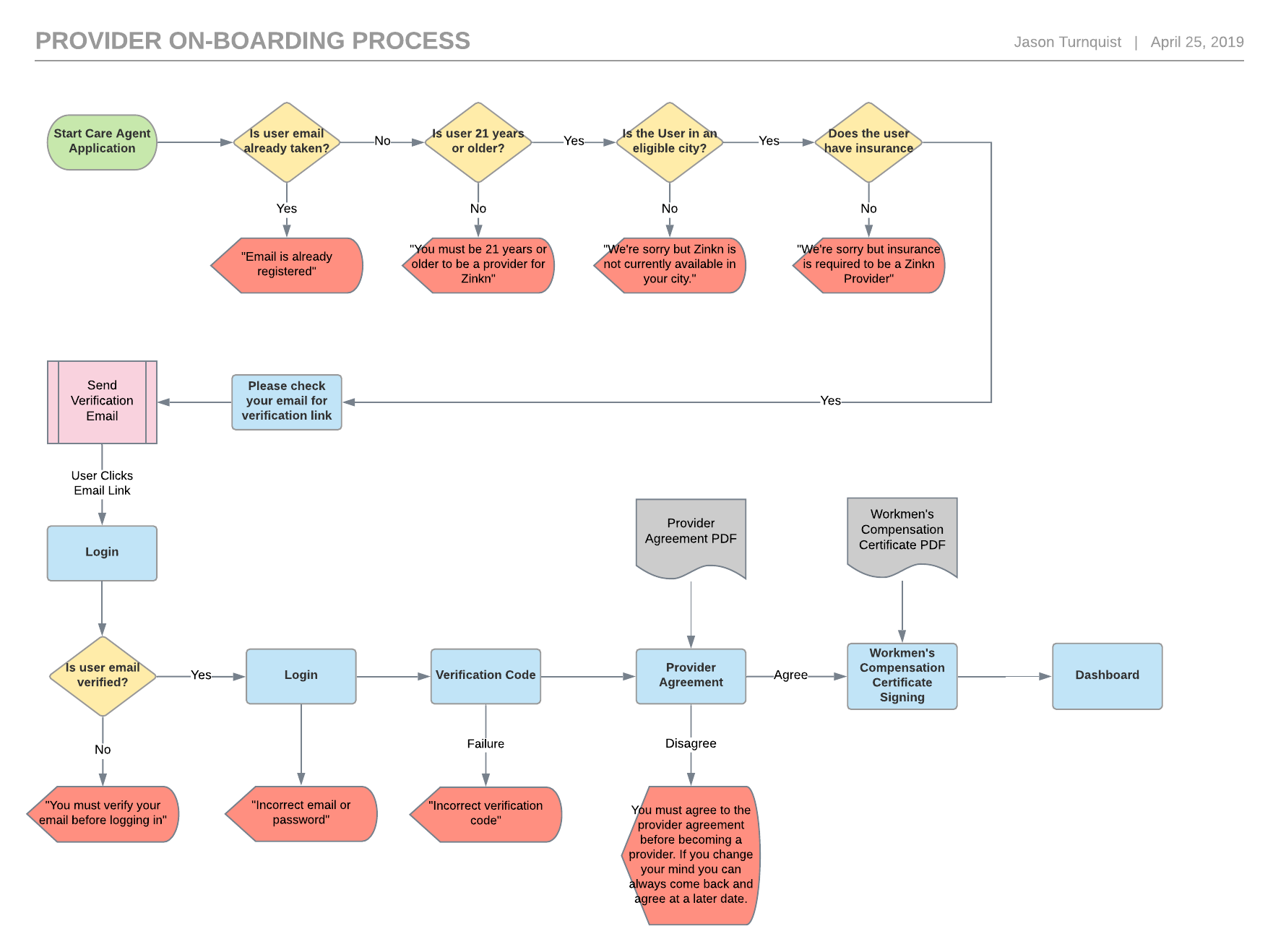
Every single process within the application needs a separate flowchart, no matter how straightforward it may seem. We always map even the simplest processes to create mutual understanding. Flowcharts for complicated processes are even more important because they organize intricate flows into simple steps. Once we present every part of the application in a flowchart, we can more accurately asses each of your requirements and features.
But the mission of this meeting is not to tell you what you can and cannot do: our goal is to give you the important details so you can make well-informed decisions about how to build your MVP. Will some redundant features take you over budget? Let’s discuss cutting back. Will the most important features take less time than anticipated? Let’s discuss scaling up. Feature review gives you unprecedented transparency and unrivaled control over the project direction. At the end of this second phase, we will both have a strong, mutual understanding of what we’re building together.
 Phase III: Wireframes, Final Estimates, Timelines
Phase III: Wireframes, Final Estimates, Timelines
Now that we have mutually established how your application will flow, our designers can begin experimenting with different page layouts. These layout drafts are called wireframes. The key to the wireframe is simplicity. Since designers experiment with several different layouts, wireframes lack details like color and transitions. Here are some example wireframes from Green Mountain Grills.
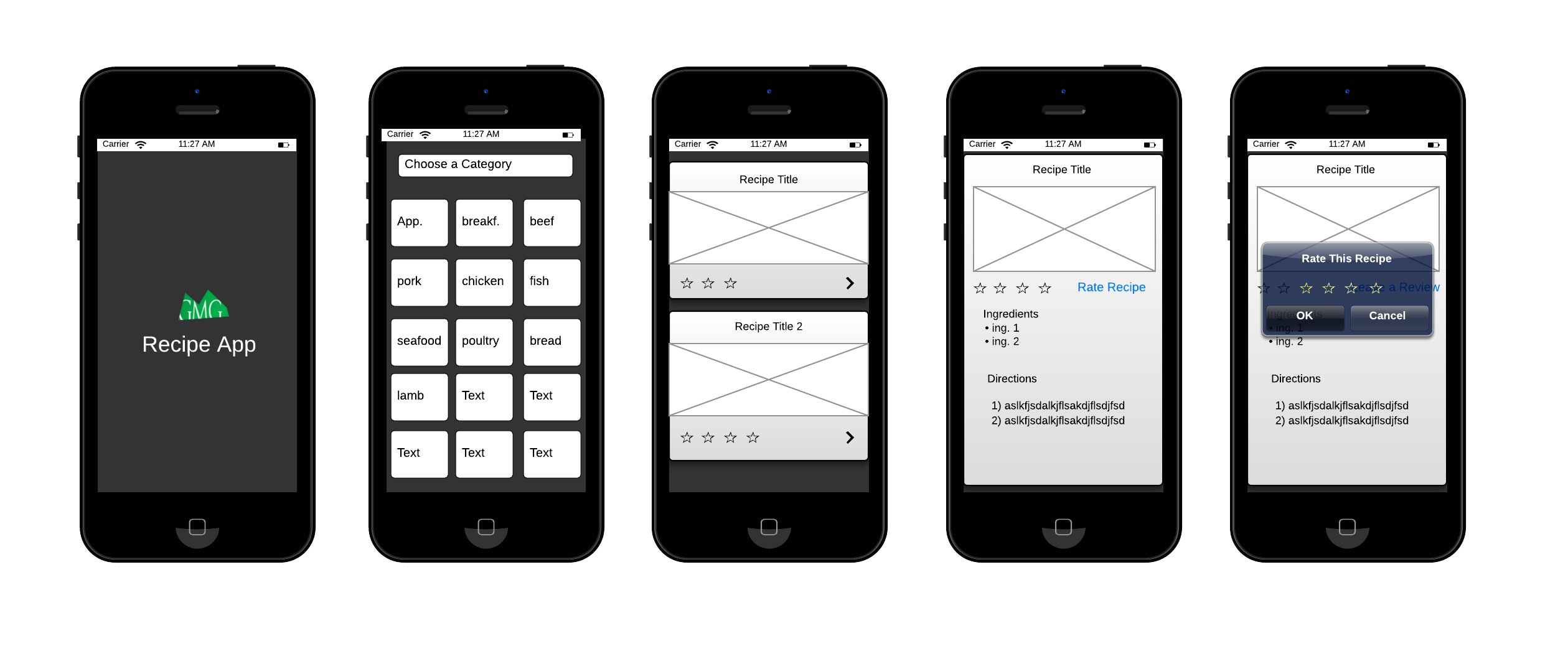
Once we’re on the same page, we build a timeline to provide you with valuable information about our intended workflow. Thanks to our in-house team’s years of experience and close collaboration, we have no problem setting and meeting sensible deadlines and milestones. Finally, after we nail down the timeline, we accurately estimate the time and cost of your project. These detailed estimates paint a realistic image of your application’s scale, scope, and cost. As a result, you will always maintain a clear and transparent view of development.
 Phase IV: Final Delivery
Phase IV: Final Delivery
At last, your spec sheet is complete. The entire collaborative spec sheet process has been carefully designed to maximize your access to information. That’s why the final sheet includes every tiny detail you could possibly desire to know. The scope and budget are defined down to the line item so that every hour and penny is used effectively, and our team is ready to move on to the design phase.
However, the completion of the spec sheet is not the end of the collaborative process. Even after kick-off, your personal project manager will act as a bridge between you and our in-house team. Above all, communication never ceases at Fyresite. To learn how we can help get your application off the ground, get in touch through our contact form or call us at 888.221.6509.
 Jason Turnquist
Jason Turnquist 